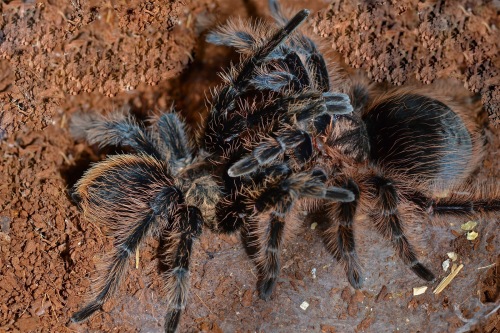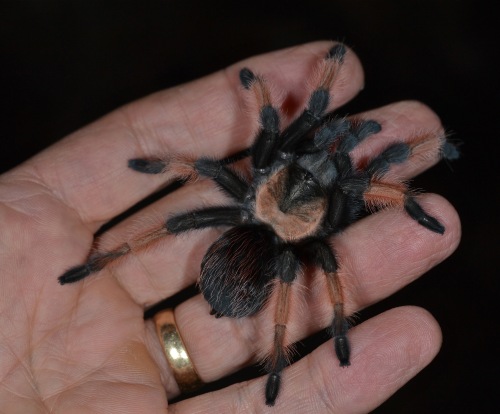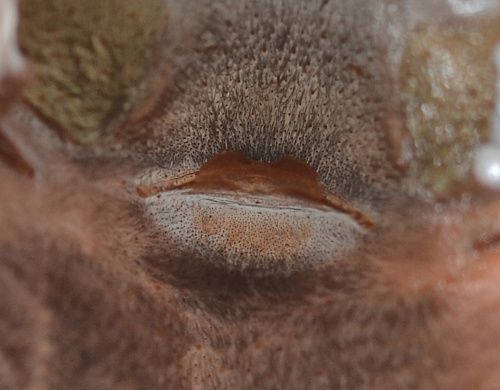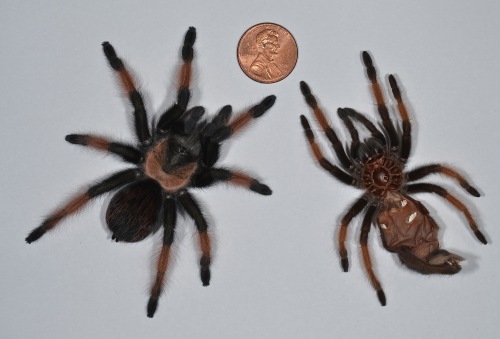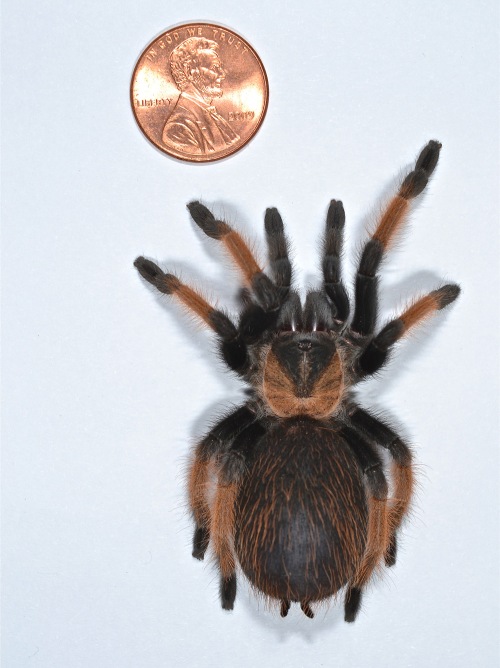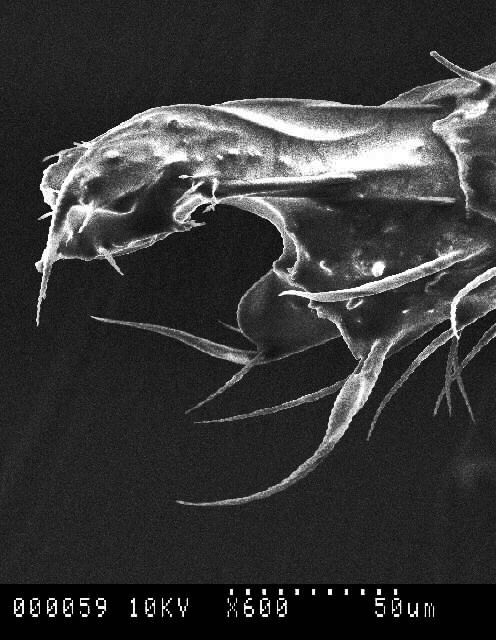
Honduran curly hair tarantula (Brachypelma albopilosum) embrace prior to mating. Click/double click image to enlarge.
The first mating took place at 6:30 PM on December 23, 2013. It was certainly easy!
The male crawled down the side of the female’s tank, squared up so that he was directly in front of her, and she raised up as he supported her legs. The mating took place over a several minute. Afterward he slowly lowered her and backed off quickly. It was about seven minutes from start to finish.
I had a number of questions afterward which I posted on the Midwest Tarantula Keepers facebook page. Jen Newman of Heartland Invertebrates was quick to respond. Our conversation follows:
Question 1: When should I repeat the breeding and how many times should I repeat?
Jen’s Response: Look for evidence of a sperm web from the male before pairing again – a long, thick, white rope of webbing. You might even catch him in the act, you never know. I typically pair 2-3 times, with new sperm webs in between, but don’t be surprised if your girl rejects him and tries to chase him off on attempt #2. It happens – and can be a sign that he got things done the first time.
Question 2: In your experience, how long does it take until the egg sac appears, and how long is it until the eggs begin to hatch. I realize there are still a lot of “ifs” at this point… My spiders are in a room that is kept at 72 degrees during the winter.
Jen’s Response: That’s really, really variable. Mine didn’t take all that long – 4 months from the last pairing, but I’ve heard of them taking as long as 6-9 months for sac construction. Feed her up well, and make sure she has a suitable spot to retreat to and/or dig, and see what happens. This is one species of Brachy that really doesn’t need anything special (unlike their red legged/kneed cousins, lol).
So at this point, I await the production of a sperm web and another pairing. All is golden thus far!
Read Full Post »
